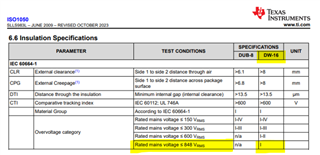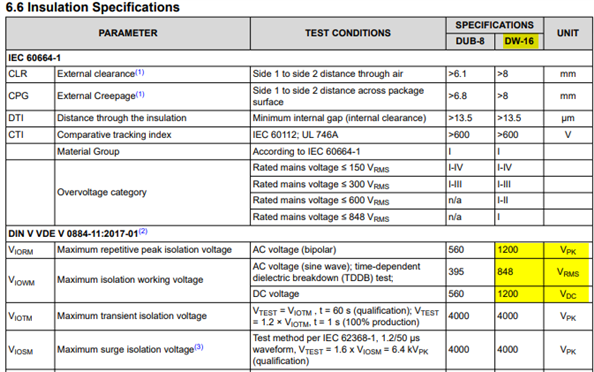Other Parts Discussed in Thread: ISO1042, ISO1540
Hi Experts,
Our customer is investigating the use of the CAN transceiver (ISO1050) for their application. They would like to understand isolation capabilities as per IEC60664. Is there a maximum rated isolation voltage for DC as per IEC60664? They can only see AC on the datasheet.
Would you be able to find this information? Would the DC rating equal the AC peak values given in the data sheets? They are looking to confirm a rated DC voltage of 806V ( or 1000VDC preferred) as per IEC 60664. Is there data to confirm this?
Regards,
Joselito Go



